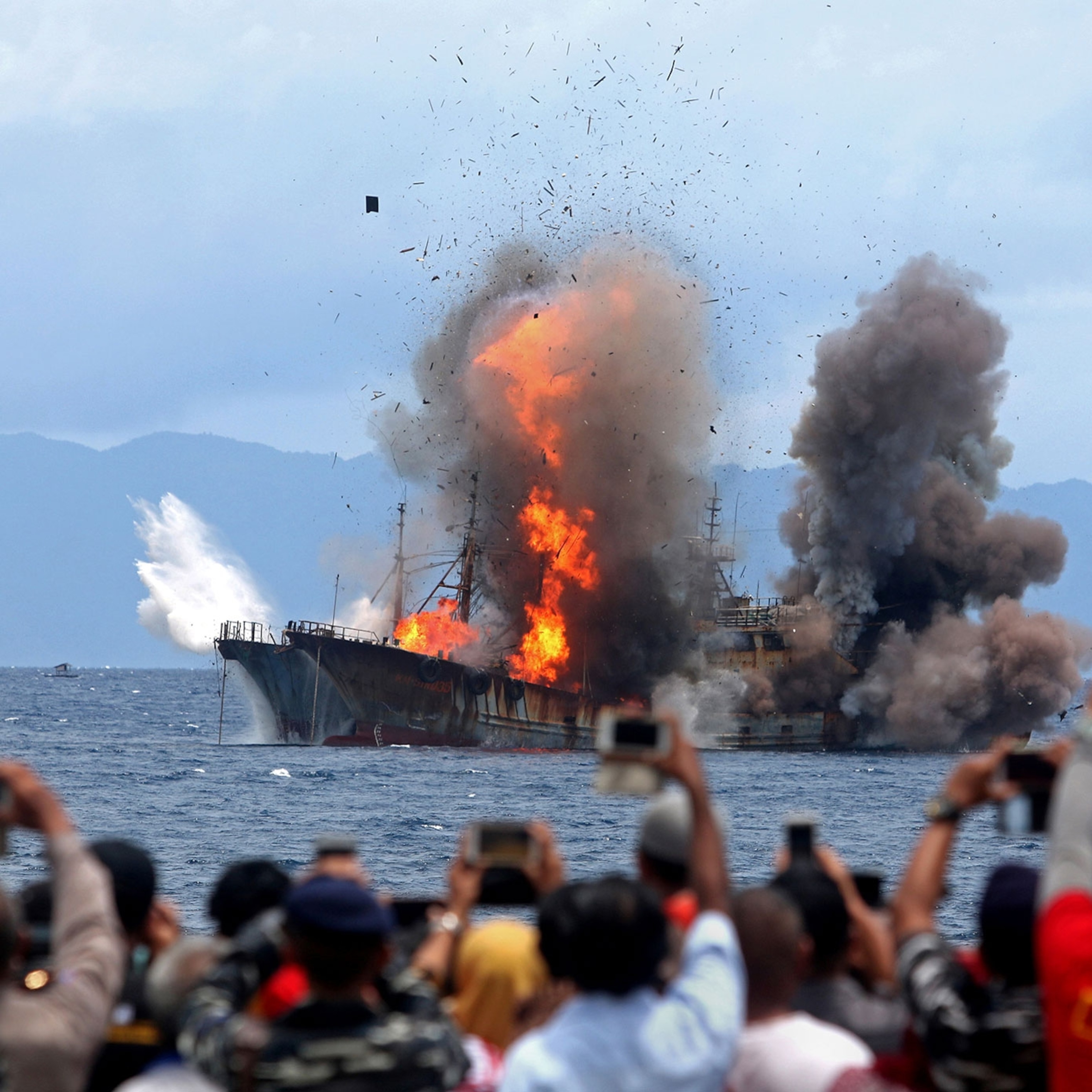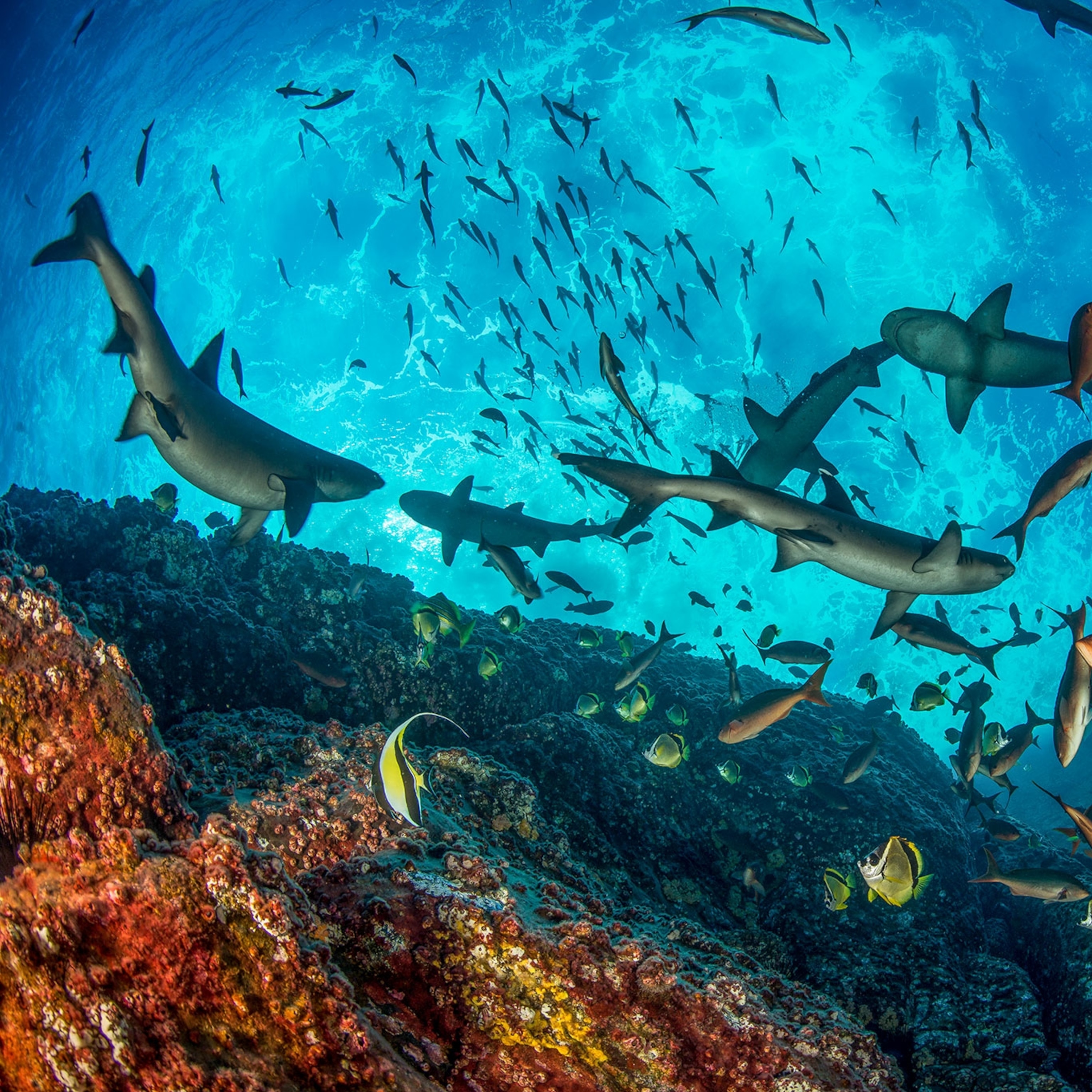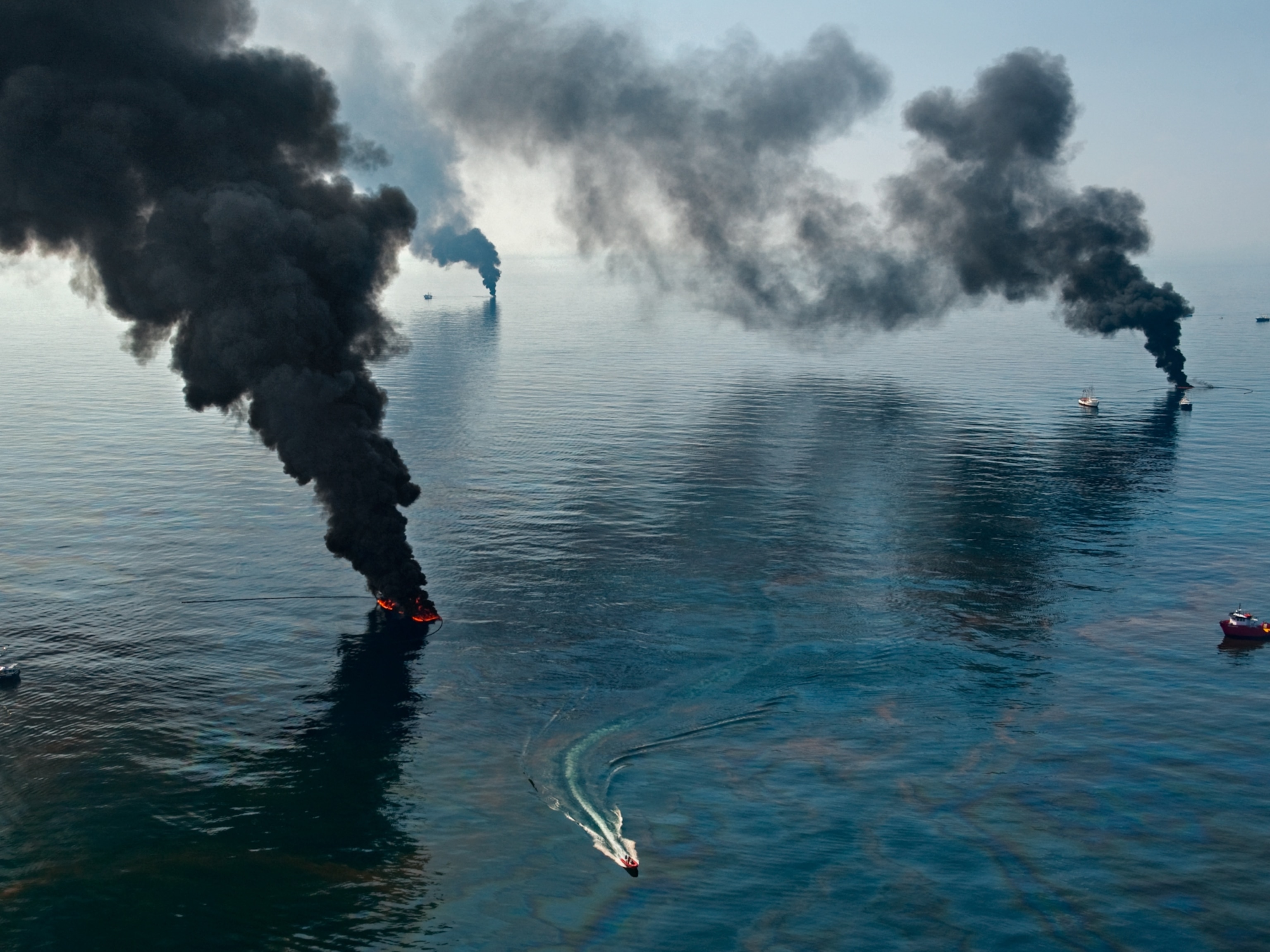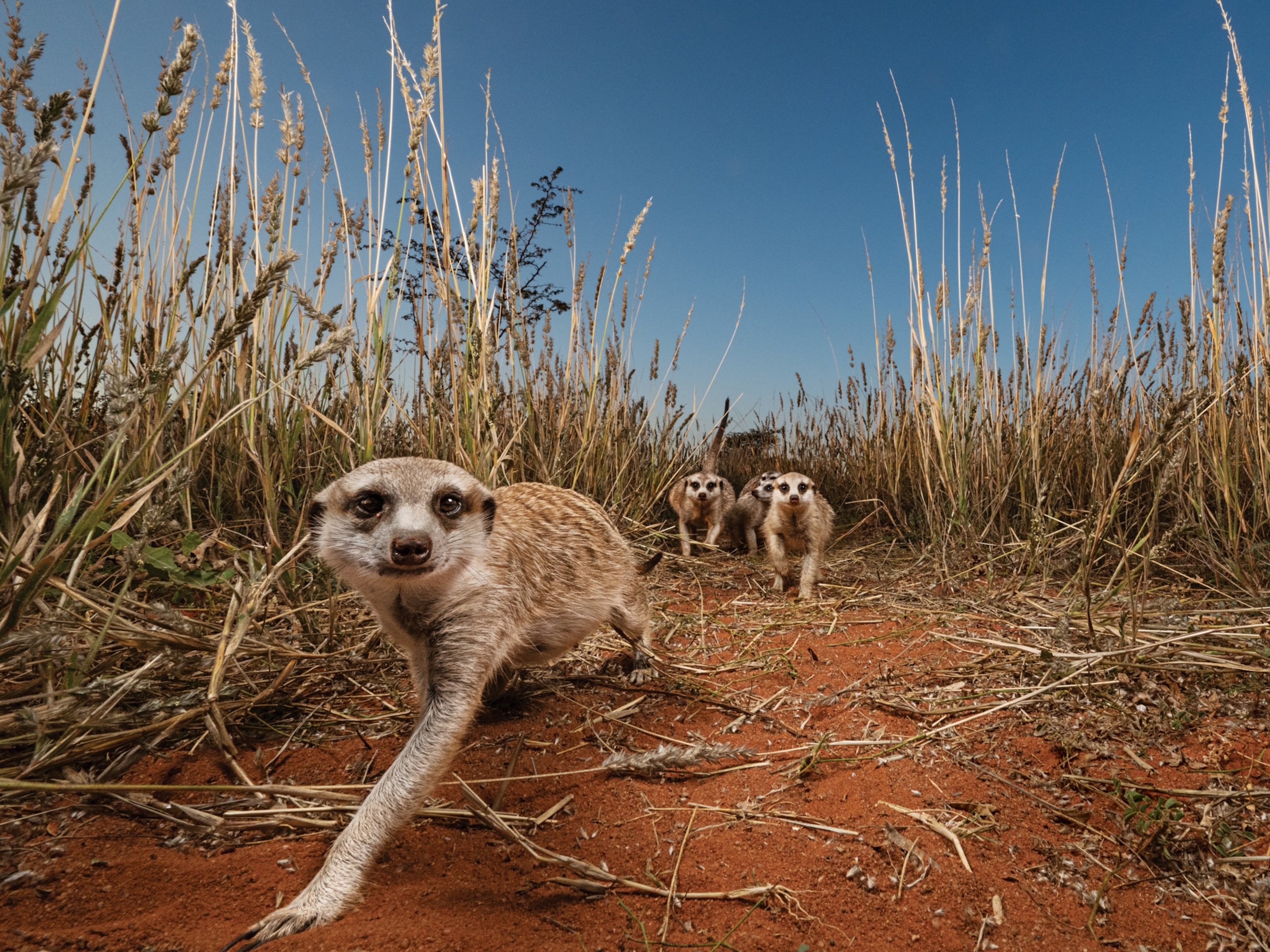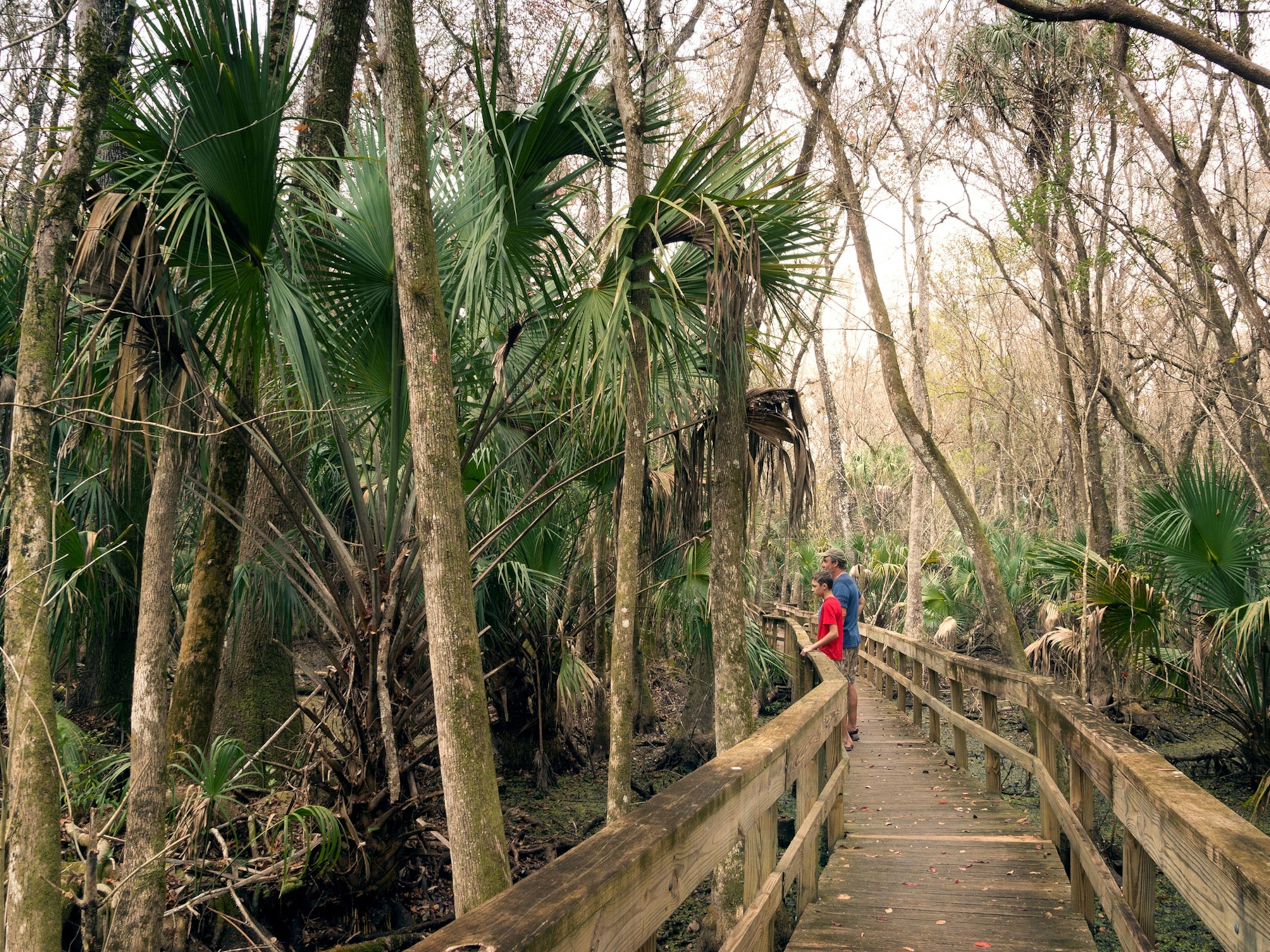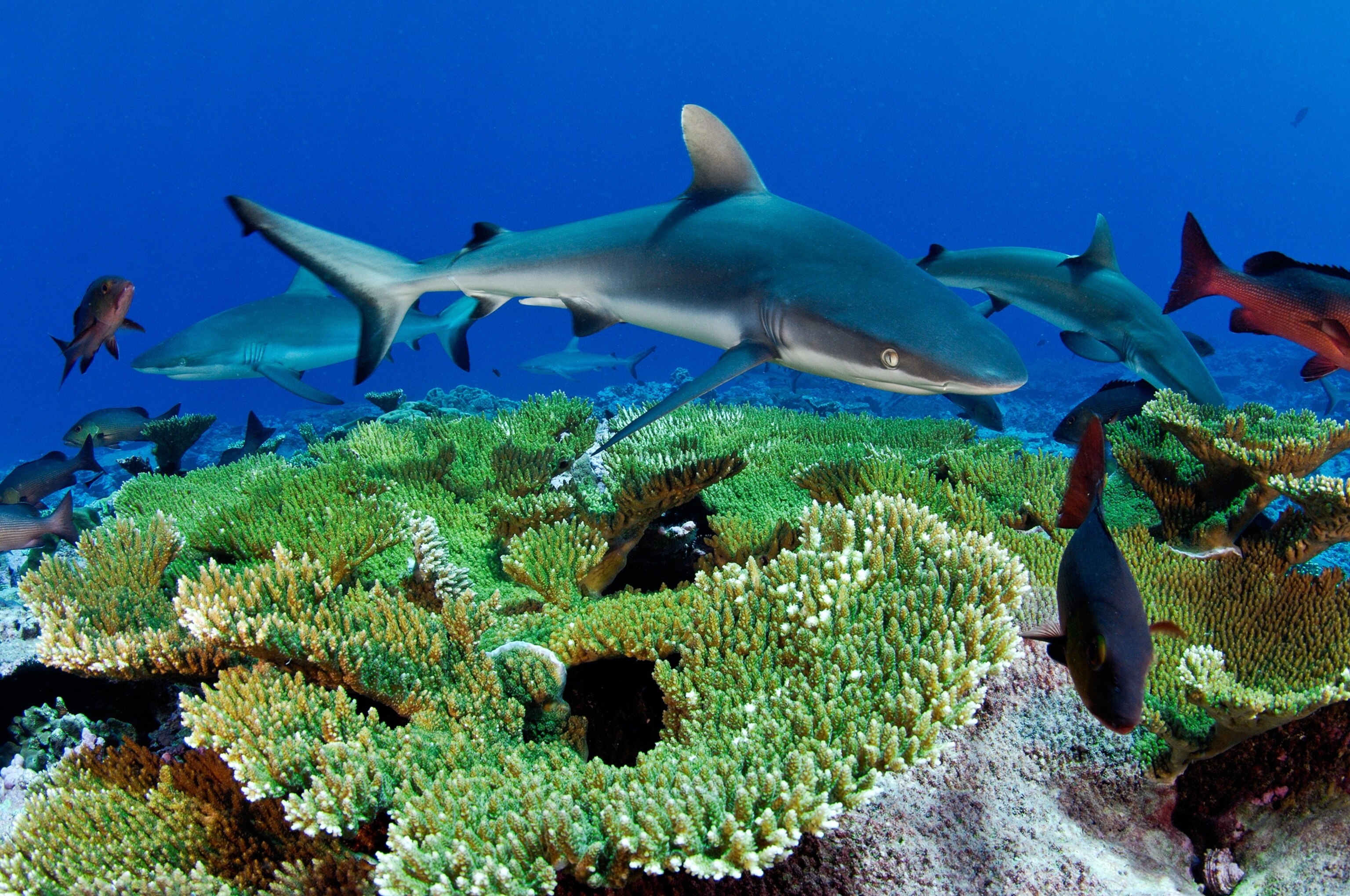
For the U.S., a New Challenge: Keeping Poachers Out of Newly Expanded Marine Reserve in the Pacific
Government aims to tap partnerships and advanced technology to protect massive sanctuary around remote islands.
NEW YORK—The Obama administration's creation of a vast protected area in the middle of the Pacific Ocean, announced Thursday, raises the question of how to police such a large and remote body of water.
The area to be protected is enormous: three times the size of California. And the protections are extensive, including bans on commercial fishing, dumping, and mining. Enforcing the fishing ban alone will mean tracking down illegal "pirate fishing" by individual boats across nearly 490,000 square miles (1.3 million square kilometers), already a huge challenge for the U.S. Coast Guard and others patrolling the waters.
The U.S. is "committed to protecting more of the world's ocean," Secretary of State John Kerry said when he announced the expansion of the Pacific Remote Islands Marine National Monument. (See "U.S. Creates Largest Protected Area in the World, 3X Larger Than California.")
But the administration has not laid out a precise strategy for watching over such a large area in the central Pacific, a daunting challenge that Kerry acknowledged on Thursday. "Agreements won't matter if no one is enforcing them," he said. Kerry added that enforcement is "going to take training and resources," but did not make clear where the resources will come from. The administration does intend to lay out a strategy for enforcement soon, with an international agreement to keep illegally caught fish out of markets intended as a keystone policy.
The area already protected by the monument is patrolled by the U.S. Navy and Coast Guard, with some presence from the Air Force.
Experts in fisheries regulation and technology say that expanding fishing bans to the new larger area could require adding patrol boats and developing new monitoring technologies such as drones and GPS tracking of fishing vessels, as well as banding together with other nations to keep illegal harvests out of markets.
"It's Still Big"
In expanding the marine reserve out to 200 miles (320 kilometers) from the shores of three of seven remote islands under U.S. control in the central Pacific-the limits of the United States' exclusive economic zone surrounding those islands-President Barack Obama's administration compromised with tuna fishers who wanted to retain access to the waters, Michael Boots, chair of the White House Council on Environmental Quality, told National Geographic. Conservationists had pressed for expanding the marine reserve to 200 miles surrounding all seven U.S.-controlled islands.
Under Obama's decision, commercial fishing is now banned in a total of 65 percent of the exclusive economic zones surrounding the seven islands.
"We thought [the monument decision] was a good way to balance what the science was telling us was important to protect and the needs of those who use the area," Boots said.
The 200-mile expansion applies to waters around Wake Island, Jarvis Island, and Johnston Atoll, while Kingman Reef, Palmyra Atoll, Howland Island, and Baker Island are left with 50-mile (80-kilometer) protected zones.
Lance Morgan, the president of the Marine Conservation Institute, said those islands still protected by only the existing 50-mile exclusive economic zones are the ones that are most heavily used by the Honolulu-based U.S. tuna fleet. "But it's still big," Morgan said of the expanded marine reserve.
For the fishing industry, the measure "reduces the economic toll the original plan would have taken on sustainable U.S. Pacific Island fisheries," the Western Pacific Regional Fishery Management Council, which had opposed expansion, said in a statement. (See "Conservationists Spar With Fishermen Over World's Largest Marine Monument.")
"This is protection of extraordinary global significance ... from shallow coral reefs to the deep sea," said National Geographic Explorer-in-Residence Enric Sala, who led a National Geographic science expedition to the region in 2005.
The expanded monument will now better protect fish, sharks, rays, whales, corals, and seabirds, including endangered animals like beaked whales, silky and ocean white-tip sharks, sooty terns, and red-tailed tropicbirds, Sala added.

Deterring Pirate Fishing
Globally, an estimated 20 percent of the world's fish are caught illegally, in what's often called pirate fishing.
Sean Martin, who owns six commercial tuna fishing boats that have worked in the area in the past, said that he "seriously doubts the U.S. will be able to commit enough resources to deter pirate fishing over such a vast area of remote ocean."
Martin, who also is president of the Hawaii Longline Association, which advocates for Hawaiian fishers, said that barring U.S. fishing vessels from operating in the expanded protection zone means there will be fewer eyes on the water looking for illegal activities. As it stands, "U.S. fishermen have an interest in making sure illegal fishing is minimized," he said.
"Protected waters can be a draw for those types of illegal activities, which is one reason why we must be even more vigilant," Kerry said. To that end, the Obama administration plans to propose a range of policy and technological strategies for fighting illegal fishing, Kerry noted, including possibly improving transparency in the nation's seafood supply chain and stepping up inspections.
"It's also abundantly clear that we need to have more effective partnerships" with foreign governments, non-governmental groups, and industry, Kerry said.
More Boats
A critic of the monument, Claire T. Poumele of American Samoa's port authority, said that the Coast Guard already doesn't have enough boats to patrol the waters, relying on help from commercial fishing vessels that partner with authorities.
But J. Charles Fox, the program director of advocacy group Oceans 5, says that research suggests there hasn't been much illegal fishing in the area in the past. "It's U.S. territory, and most people around the world fundamentally respect those boundaries," he said.
Oceans 5 and the Waitt Foundation are bolstering enforcement in another marine protected area, the groups announced Wednesday, with a joint grant of $1 million a year over the next five years to support additional patrol boat time and fuel in Kiribati, a small island nation near the U.S. Pacific remote islands. In January a new marine protected area goes into effect there around the Phoenix Island group. Now the fourth largest marine protected area in the world, the sanctuary covers 158,000 square miles (400,000 square kilometers), or about 11 percent of Kiribati's exclusive economic zone.
Technology to Find Cheaters
Much of the grant money going to Kiribati will also support development of new technologies. "That world is fast changing," Fox said.
The team will be looking at ways of measuring the electronic signatures of vessels to see if crews are fishing in places where they aren't allowed. Techniques include intercepting radio signals, using sonar buoys, setting up camera buoys, and looking at satellite and GPS data. Monitors can then alert offenders to law enforcement, or attempt to shame them publically.
"In Kiribati, as in the Pacific remote islands, officials will form partnerships with other governments and with nonprofits and industry to engage in joint monitoring," Fox said. "The trend is toward increased cooperation and sophistication of equipment."
Shah Selbe is among several engineers who have been working to develop such monitoring technology, in his case with support for young researchers as a 2013 National Geographic Emerging Explorer. He has worked with low-cost hydrophones, to catch the sound of boats approaching restricted areas, and has been testing drones to monitor ocean preserves. (See video: "Can Drones Fight Illegal 'Pirate' Fishing?") Other ocean entrepreneurs have been working on systems that digitally track catches, from boat to plate.
Andy Sharpless, the president of the nonprofit conservation group Oceana, said that such technological solutions offer great promise in deterring illegal fishing in the near future, particularly when it comes to satellite tracking. Fishers who work with Oceana are interested in standardizing an international system of transponders that would tell regulators where their boats are at all times, said Sharpless. "That would enhance safety and make it harder for people to cheat," he said.
Even so, Sharpless added that he doesn't think it should be entirely up to industry to do their own policing. "It's got to include government," he said. "They're the only ones who have the guns that will scare the bad guys."
"Our Goal Is to Get This Done"
Kerry said another way the Obama administration hopes to deter pirate fishing is by implementing the Port State Measures Agreement, an international treaty that requires member nations to prevent illegally caught fish from entering the market. Eleven nations or parties have ratified the agreement, but a total of 25 must sign before the treaty will take effect. The U.S. Senate ratified the treaty in April.
"Our goal is to get this done this year," Kerry said.
Another way to deter pirate fishing and ensure protection of sanctuaries is to invest in educating the public about the importance of those areas, said Fred Mitchell, the foreign minister of the Bahamas, at the State Department conference in New York City.
When it comes to the marine protected areas that cover about 10 percent of his country's nearshore marine environment, "a lot of resources have to be spent on public education and getting buy-in from the public and from fishermen," said Mitchell.
The marine ecosystem has shown recovery in those protected areas, the minister added. "The sea is the lifeblood of the Bahamas," Mitchell noted. "Indeed, it is the lifeblood of the world."
Looking toward the future, Fox of Oceans 5 said regulatory and technological solutions are likely to come together to greatly reduce illegal fishing.
"I firmly believe that in 10 years, enforcement won't be a problem," he said. "The world is becoming more transparent, markets are closing to illegal fish, and it's really just a matter of years before anyone can find out where every vessel is at any time."
Follow Brian Clark Howard on Twitter and Google+.

